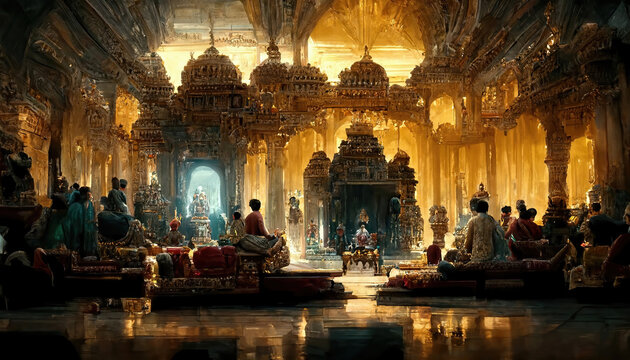Hey Hustlers! Dr. Arpita Sen here. Today, we delve into the fiery legacy of the Haryanka Dynasty, the architects of the first Indian empire – the mighty Magadha. This dynasty, reigning from roughly 544 BCE to 413 BCE, wasn’t just about conquering lands; it was about establishing a strong administrative structure, fostering intellectual pursuits, and laying the foundation for a glorious era in Indian history. So, grab your metaphorical torch, because we’re about to illuminate the fascinating story of the Haryankas.
From Kingdom to Empire: The Rise of the Haryankas
The Magadha Empire wasn’t built overnight. Before the Haryankas, several Janapadas (kingdoms) jostled for power in the Gangetic plains. The Haryankas, however, emerged from the pack due to the shrewdness of rulers like Bimbisara and his son, Ajatashatru.
-
Bimbisara (544 BCE – 493 BCE): Credited with laying the groundwork for the empire, Bimbisara focused on strategic alliances and diplomacy. He secured his borders through well-forged partnerships and expanded his territory through calculated conquests. Additionally, he established Rajgir as the capital, a well-fortified city that became a symbol of Magadha’s power.
-
Ajatashatru (493 BCE – 462 BCE): Known for his ruthlessness and ambition, Ajatashatru expanded the empire significantly. He conquered key kingdoms like Kosala, paving the way for Magadha’s dominance. However, his reign was also marked by internal conflicts, including a power struggle with his own father.
Beyond Conquest: Administration and Legacy
The Haryanka Dynasty wasn’t just about military might. They established a well-organized and efficient administration that laid the foundation for future empires. Here are some key aspects of their governance:
-
Strong Bureaucracy: The Haryankas established a centralized administration with appointed officials overseeing different regions. This system ensured effective governance and tax collection, crucial for the empire’s stability.
-
Focus on Infrastructure: The Haryankas understood the importance of infrastructure development. They built a network of roads and canals that facilitated trade and communication within the empire.
-
Economic Prosperity: The efficient administration and focus on trade led to a flourishing economy. Magadha became a center of commerce, attracting traders and merchants from across India.
-
Patronage of Arts and Sciences: Despite their political focus, the Haryankas didn’t neglect intellectual pursuits. They patronized scholars and artists, fostering a vibrant cultural environment.
The Haryanka Legacy: A Beacon for Future Empires
The Haryanka Dynasty’s reign ended with the rise of the Shishunaga Dynasty. However, their legacy continued to influence future rulers. Here are some key takeaways from their reign:
-
The Power of Strategic Alliances: Bimbisara’s focus on diplomacy highlights the importance of building strategic partnerships for success.
-
Efficient Administration is Key: The Haryanka’s well-organized bureaucracy serves as a reminder that a strong foundation is crucial for any empire or business.
-
Focus on Infrastructure for Growth: The development of roads and canals showcases the importance of infrastructure in promoting trade and communication.
-
Cultivating Intellectual Spirit: The Haryanka patronage of arts and sciences reminds us that fostering creativity and innovation is vital for long-term progress.
The Haryanka Dynasty’s story is not just about conquering lands but about building a legacy. They ignited the flames of an empire, established efficient systems of governance, and laid the foundation for the golden age of Indian history that followed. Hustlers, remember, true success isn’t just about immediate wins; it’s about building a strong foundation, fostering collaboration, and creating a legacy that endures.
So, are you ready to ignite your own journey toward success? Take inspiration from the Haryanka Dynasty and go forth, hustlers, and leave your mark on the world!
Hustle on,
Dr. Arpita Sen











